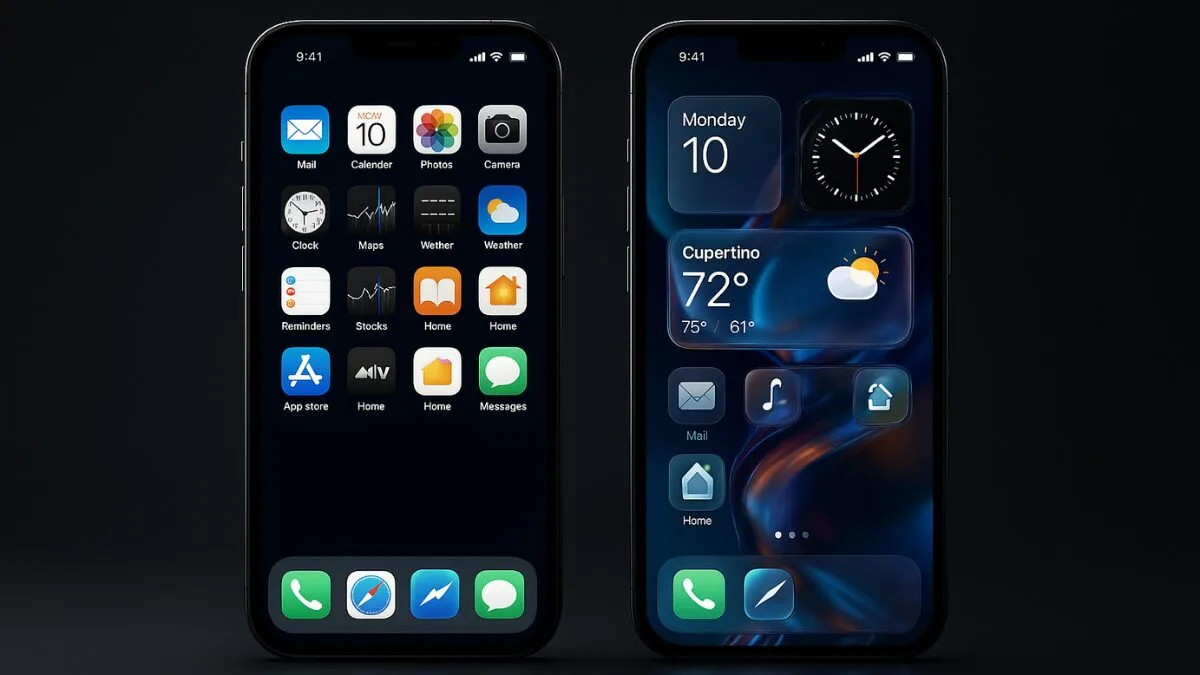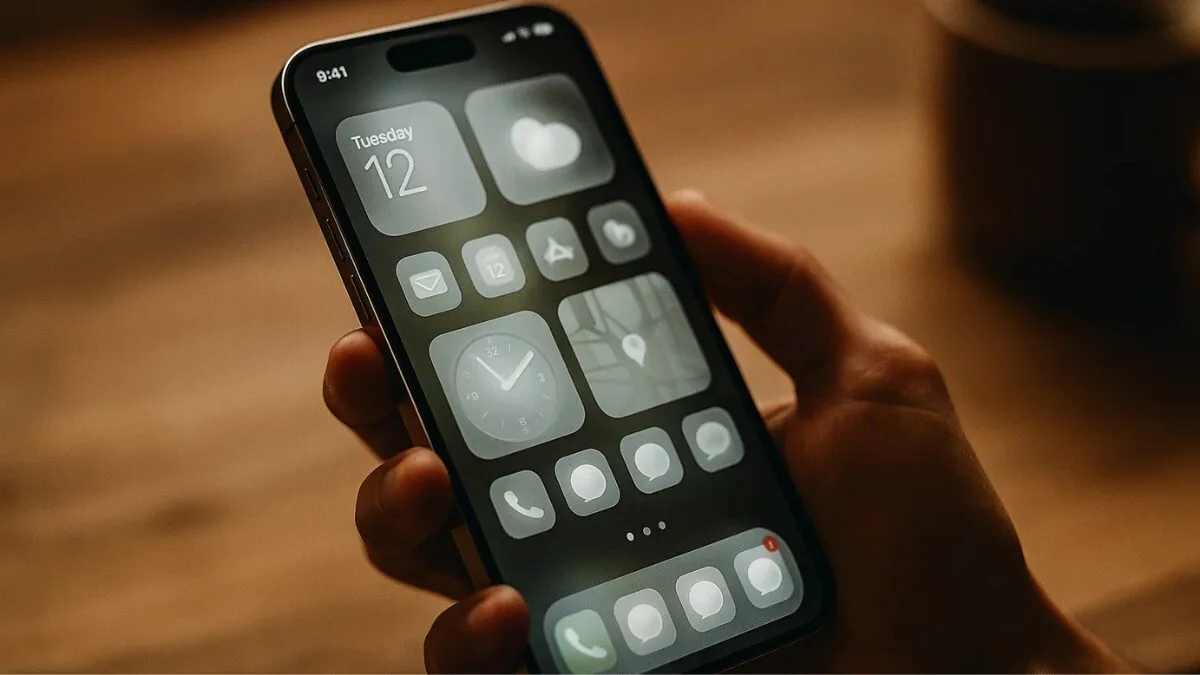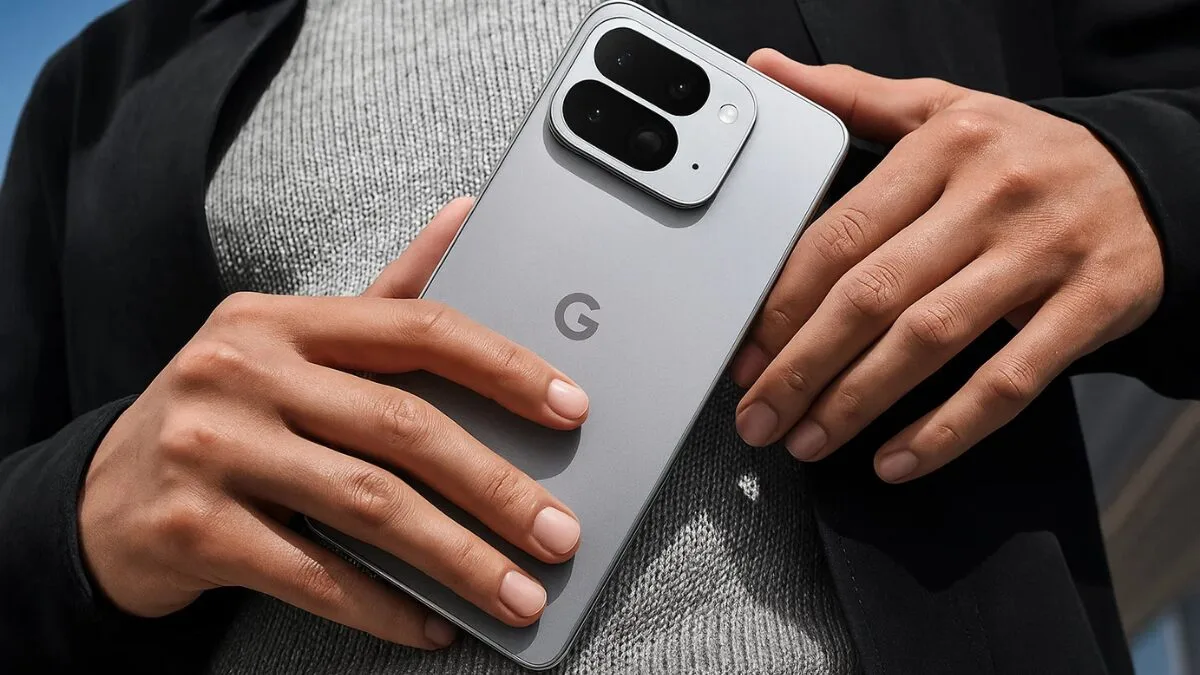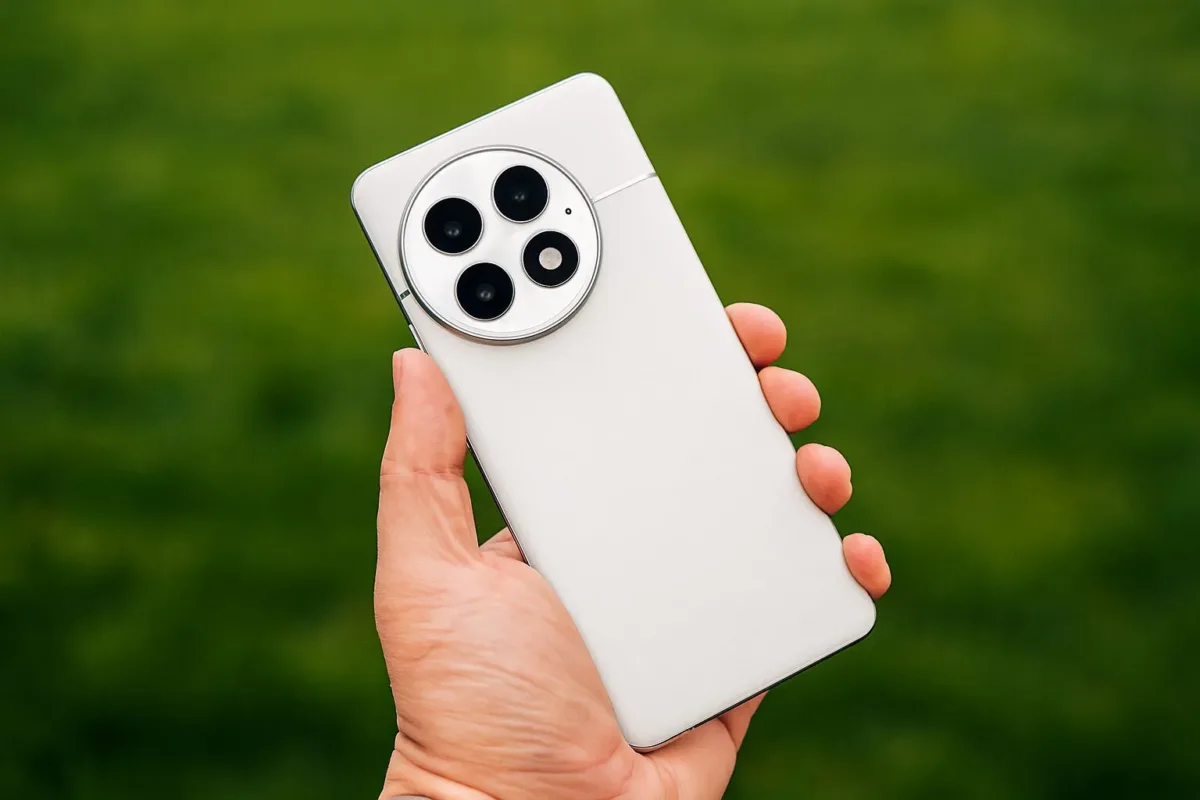Introduction
Apple’s new iOS 26 vs iOS 18 is a major visual and functional update that centers on Apple Intelligence and a new “Liquid Glass” interface — but it is not right for every user. The OS introduces on-device generative tools, live translation in Messages and FaceTime, a redesigned Home and Lock screen, and deeper CarPlay and Apple Music integrations. These additions change how iPhones surface information and may affect privacy, battery life and app behavior depending on hardware.
what’s new

iOS 26 adds Liquid Glass for icons and widgets, system-level Apple Intelligence (live translation and visual analysis of screenshots), a refreshed Safari layout, and a new Apple Games hub. Early reviewer coverage highlights stronger generative-image features and tighter on-device AI controls that aim to keep sensitive data local when possible.
Who can use it and what to expect
Apple’s compatibility list shows iPhone 13 and later are supported for iOS 26, but the full Apple Intelligence suite is limited to the newest chips and select models. That means iPhone 14 Pro and later will see the most comprehensive feature set; older phones will get core updates but may not support AI-heavy tasks. Organisations and users who need predictable battery life or app stability should hold off on mass deployment until point releases address compatibility and power management.
Performance and privacy trade-offs

iOS 26 polishes animations and system fluidity, yet on-device intelligence performs resource-heavy bursts while processing translations or image analysis. Apple emphasises local processing for many intelligence features and publishes device/language availability so users know what runs on-device versus server-assisted. For most people, the trade-off is a small, occasional battery or CPU cost in exchange for smarter, context-aware capabilities.
Frequently Asked Questions
Will iOS 26 slow down my older iPhone?
Advanced AI features are tied to newer hardware. Older devices will receive core improvements but may see higher battery use during heavy tasks; waiting for optimization releases is prudent.
Are Apple Intelligence features private?
Many intelligence tools are designed to run on-device; for features requiring servers Apple documents device and language limits — check Apple’s privacy notes for specifics.
Can I revert to iOS 18 after updating?
Downgrades are usually permitted only for a short window after release. Create a full backup and consult Apple Support before updating if rollback is a concern.
Conclusion — Should you update now?
If you own an iPhone 14 Pro or newer and want the latest personalization and Apple Intelligence tools, updating at public release is sensible. If you rely on older hardware (iPhone 12/13), use specialised enterprise apps, or require maximum stability, wait for at least one point release (e.g., iOS 26.1) and confirm that critical apps are compatible. Apple continues to maintain iOS 18 with security and bug-fix updates — recent point releases show ongoing support — so staying on iOS 18 is a safe short-term option while you evaluate the new features.
Quick upgrade checklist
- Back up to iCloud or a local Mac.
- Update essential apps and check developer advisories.
- Review Apple’s per-model feature-availability page.
- Pilot iOS 26 on one device before wider deployment.









